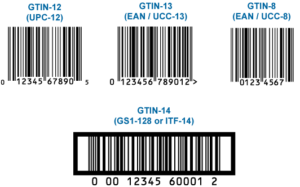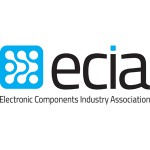Background: GTIN Sunrise 2005
GTIN Sunrise 2005 was an industry initiative established by GS1 US (formerly the Uniform Code Council) which mandated that as of January 1st 2005, all North American retailers and trading partners that scan Universal Product Codes (UPC) should have expanded the data structures associated with the UPC to a 13-digit field length to process EAN-13 symbols. Additionally, GS1 US recommended that all manufacturers, retailers, and distributors update and expand their databases and applications to accept 14-digit data structures. These data structures will support the Global Trade Item Number (GTIN), allowing complete item identification of using a GS1 data carrier to support efficient and seamless global trade.
14-digits vs. 13-digits
The GTIN Sunrise 2005 initiative was focused on creating a compliant environment for scanning and processing EAN-13 and EAN-8 codes in addition to the 12-digit UPC symbols currently scanned at point-of-sale in North America . While the initiative does not explicitly state inclusion of 14-digit data structures, it recommendeded that all parties who upgraded their systems for Sunrise 2005 compliance take the additional steps to make their systems compliant with the GTIN. In addition, upgrading systems for GTIN compliance allows scanning of all levels of packaging (ITF-14, or case codes, can be processed) as well as emergent technologies such as GS1 Databar (Reduced Space Symbology).
Who was impacted by the GTIN Sunrise 2005 deadline?
- Those who assigned product numbers – Any organization or manufacturer who assigned product numbers for trade items or services needed to be aware of the new guidelines to ensure compliance with trading partners and suppliers.
- Those that turned numbers into barcodes – Packagers, commercial printers, and graphics and layout specialists needed to be aware for the new guidelines to ensure compliance for their customers.
- Those that use barcodes in applications – Retailers, distributors, or any receivers of trade items (which may also include manufacturers and suppliers) needed to be aware of the new guidelines to ensure their own systems are compliant.
What kind of impact did the Sunrise 2005 date have on organizations?
Receivers of trade items must be able to scan 12-digit UPC, EAN-13, & EAN-8 symbols. It is expected that receivers now see 14-digit numbers used to identify all levels of packaging on products as well as emergent codes like GS1 Databar (aka Reduced Space Symbology). All of the above may have manufacturer prefixes that are longer than in the past. If there are any system blocks against reading manufacturer numbers longer than six digits, these must be removed to accommodate the new standards. Suppliers or manufacturers who previously marked their products with 12-digit UPC codes do not need to change their procedures. However, any trade items you purchase may have longer numbers or manufacturer prefixes. Ensure your database storage systems are capable of storing up to 14-digits. If your company or organization is multi-national, you may already be using longer company prefixes assigned by one or more EAN member organizations.
Data storage and applications requirements checklist:
- Systems and applications need to expand to accommodate 14-digits.
- Data structures that require less than 14-digits should be right justified and left zero filled.
- The full 14-digit structure should be transmitted when communicating GTINs electronically.





